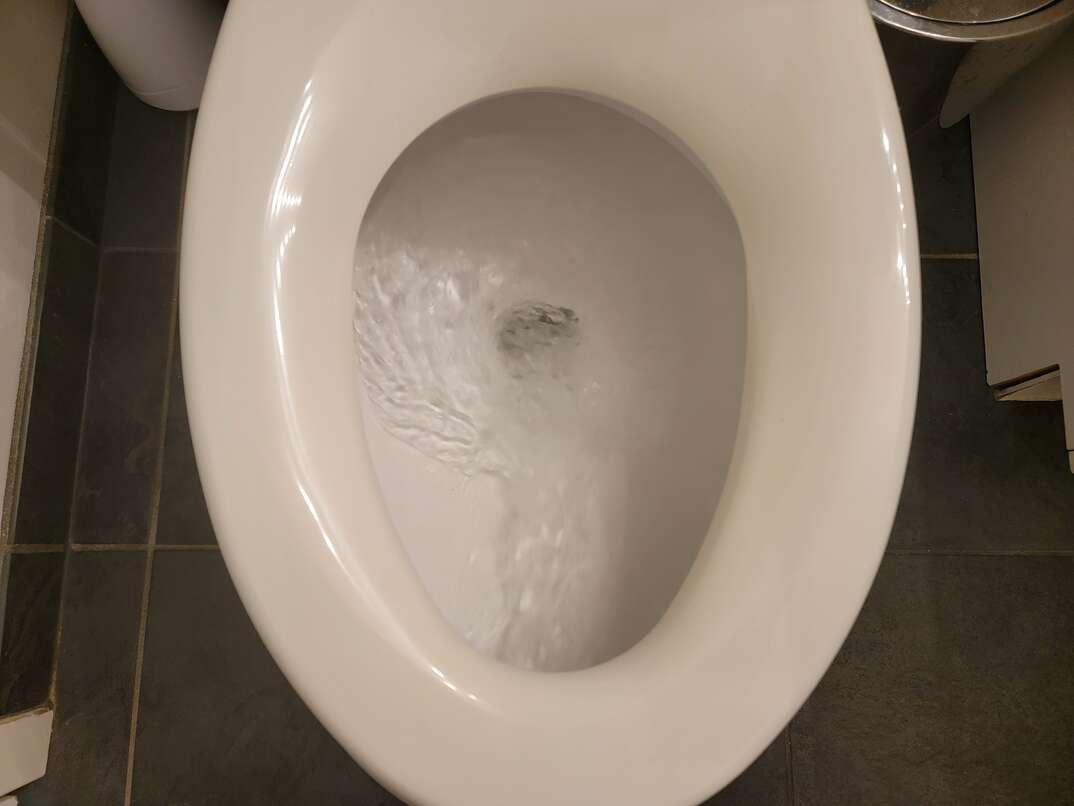Spooked by Phantom Flushing? Here's Why Your Toilet Is Flushing by Itself

If your toilet flushes by itself, you might wonder if you have a mischievous ghost in your bathroom. Although this phenomenon is often referred to as "phantom flushing," there's nothing spooky going on.
Phantom flushing is a common problem that's usually easy to resolve. Here’s a step-by-step guide to getting rid of the ghost in your restroom.
Why Does the Toilet Flush by Itself?
Understanding how toilets work can help explain why a toilet flushes by itself. Toilets have a tank filled with water that flows into the bowl each time you flush to remove waste. This tank refills after every flush, and a flapper seals the pipe connecting it to the toilet to prevent the water from constantly flowing into the bowl.
A damaged flapper is the most likely cause of a toilet flushing by itself. These parts can develop cracks over time that allow water to trickle through. Algae growing on the flapper can also prevent it from sealing tightly enough to hold the water inside the tank. Generally, you'll need to replace a rubber flapper every two years.
Minor damage can cause water to constantly trickle into the bowl. However, a severely damaged flapper allows large amounts of water to pass into the bowl, causing the toilet to flush itself. How often this happens depends on how bad the damage is.
The following signs can help confirm that you have a faulty flapper on your hands:
- Constant hissing, trickling or gushing sounds coming from the tank
- Visible rippling of the bowl water, even if you didn't flush the toilet recently
- Changes in the water color in the toilet bowl after adding a few drops of food coloring to the tank
You can sometimes fix a toilet that flushes by itself without replacing the entire flapper assembly. Begin by turning off the water supply and flushing the toilet a few times until the tank is empty.
Next, check the toilet flapper for algae buildup. Cleaning up any algae may allow the flapper to seal properly and solve the issue. Also, check if the chain catches underneath the flapper and stops it from shutting correctly. If it does, consider shortening the chain to remove the obstruction.
If these steps don't work or you can see visible damage to the flapper, it's time to install a replacement.
How to Replace a Toilet Flapper
You can call a professional plumber to replace a toilet flapper. However, this task is simple enough for even DIY novices. Before starting, purchase a new flapper assembly with a chain. You’ll also need a pair of scissors and some protective gloves.
1. Switch the Water Off
Find the water shutoff valve on the toilet's supply line and turn it clockwise until the water stops flowing into the tank. Empty the tank by flushing the toilet. You might need to hold the flush lever down to remove all the water.
2. Remove the Flapper
Next, unclip the flapper chain from the horizontal flush handle lever. This lever sits horizontally from the flush handle to the area above the flapper assembly. Pull the ears on the sides of the flapper off their pegs and pull the flapper out. You will need to snap the ears if you have a rigid plastic flapper.
3. Install the New Flapper Assembly
Remove the ring attached to your new flapper assembly if your model attaches to the flush valve pegs. Next, slide the new flapper into position and slide the ears over the pegs. Clip the flapper chain onto the handle lever.
It's essential to check that the chain isn't so tight that it holds the flapper open when you're not pressing the flush. However, it shouldn't be so long that it can catch under the flapper. Adjust the chain to have a little slack when you release the flush lever.
4. Test the Flapper
Finally, turn the water back on at the shutoff valve. Check that the flapper forms a proper seal and that the chain is the correct length by flushing the toilet and watching how the assembly operates.
Elocal Editorial Content is for educational and entertainment purposes only. Editorial Content should not be used as a substitute for advice from a licensed professional in your state reviewing your issue. Systems, equipment, issues and circumstances vary. Follow the manufacturer's safety precautions. The opinions, beliefs and viewpoints expressed by the eLocal Editorial Team and other third-party content providers do not necessarily reflect the opinions, beliefs and viewpoints of eLocal or its affiliate companies. Use of the Blog is subject to the
Website Terms and Conditions.The eLocal Editorial Team operates independently of eLocal USA's marketing and sales decisions.



